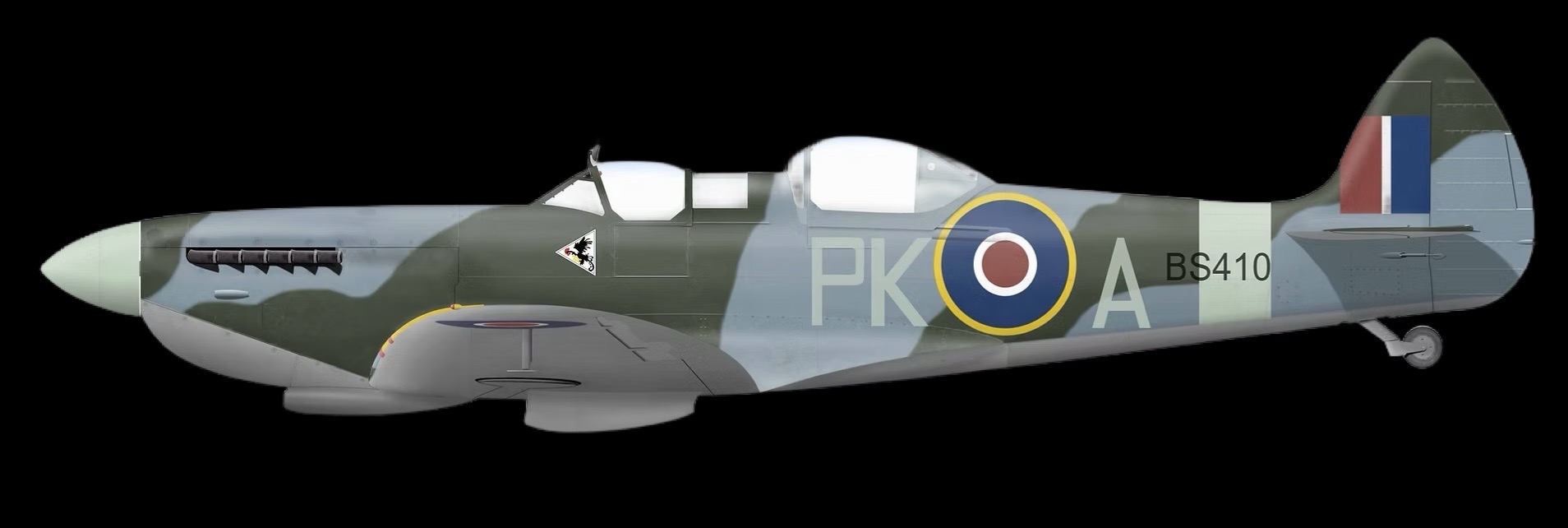Paul has always wanted to have a go in fast jets like the MIG’s, but as they are in Russia that is not a possibility due to Mr Putin. When he saw that there was a limited number of flights available from Newcastle Airport and also the possibility of flying over the Lake District in a Spitfire it seemed a good second choice.
Two-seat Spitfire trainers saw limited wartime use, with only a few experimental conversions, such as a Mk VC by RAF No.261 Squadron and a Mk IX used by the Soviets. However, the trainer program became formalized postwar. In 1946, a Mk VIII (MT818) was built as a demonstrator, followed by 10 T Mk IXs exported to India in 1948. In 1951, six TR9s were converted for the Irish Air Corps to train Seafire pilots.
History of Spitfire ML295 (G-CLXB)

Spitfire ML295 (CBAF-8381) was built in early 1944 and assigned to No. 411 (Grizzly Bear) Squadron, Royal Canadian Air Force. It flew 67 missions from June to July 1944, including bomber escorts, ground attacks, and reconnaissance over German-occupied France. On 30 July 1944, it was downed by flak near Caen. Pilot H.W. Kramer evaded capture with the help of the French Resistance before being caught, escaping from a POW camp, and returning to England in August.
The wreck was recovered in 1989 by Jean-Pierre Bernamou, restored, and later converted to a two-seat configuration at Biggin Hill. ML295 flew again on 14 January 2022. It is now based at Leeds East (formerly RAF Church Fenton).
History of Spitfire SM520 (G-ILDA)

Spitfire SM520 was built in 1944 as a Mk IXe fighter and sent to the South African Air Force (SAAF) in 1948. Likely used for training, it crashed and was scrapped. Identified in 1981, it passed through several owners before Paul Portelli acquired it in 2002 and commissioned its restoration and conversion to a two-seat TR9. Registered as G-ILDA, it was completed in 2009 after Portelli’s death and purchased by Spitfires.com.
Initially painted in Royal Netherlands Air Force colours, it was later repainted in a WWII SAAF scheme, reflecting its origins. SM520 now carries markings of a rare, unofficial two-seat Spitfire used by 4 Squadron SAAF in Italy during the war.
In 2024, G-ILDA was repainted again to honour RAF Westhampnett (now Goodwood Aerodrome) and Battle of Britain pilot Nigel Rose of 602 Squadron, linking the aircraft to the airfield’s legacy and the heroic efforts of “The Few.”
History of Spitfire BS410 (G-TCHI)

Originally ordered in 1940 as an F.I, Spitfire BS410 was completed as a Merlin 61-powered F.IX and first flew on 28 October 1942. It was assigned to No. 315 (Deblin) Polish Squadron at RAF Northolt in November 1942, flying 35 operational sorties including Ramrods, Rodeos, and escort missions. It was flown by several noted Polish aces and famously patrolled over Wembley during an England vs. Wales football match in February 1943.
On 13 May 1943, BS410 was lost in combat after a cooling system failure, forcing pilot Piotr Kuryllowicz to bail out. The aircraft was excavated in 2005 and later restored over 15 years by Martin Phillips, including conversion to a two-seat TR9 configuration.
